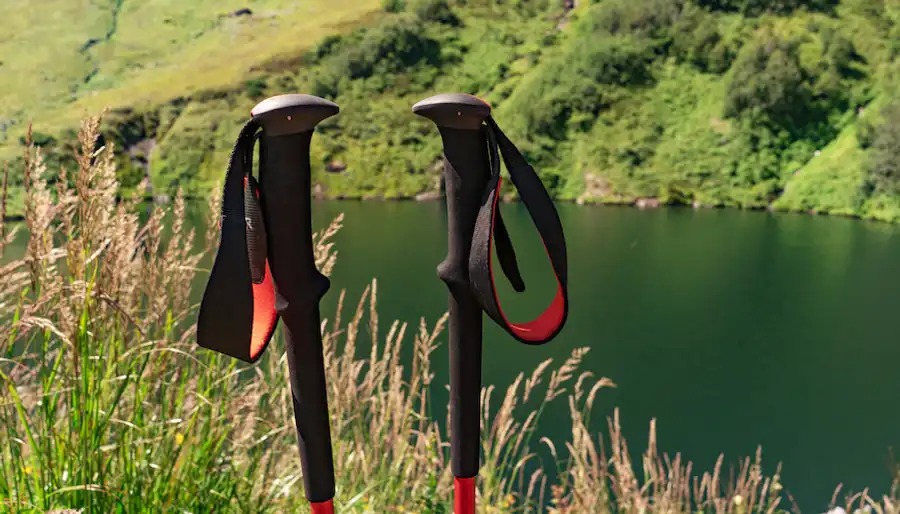Walking Poles – What are the benefits, and why should I use them?
04 June 2024

Walking is often underrated. So often it is considered something we must do to get to places.
For me, walking is an opportunity to explore, get out in nature, clear my head, move my body, and, at times, really challenge myself physically.
A day’s walk often requires some pre-planning, from appropriate clothing, boots, and lunch (this is what 90% of my backpack contains). Meanwhile, Damien’s bag has sensible stuff like a map, first aid kit, compass, and walking poles—why did I not discover these sooner?!
They are game-changers; however, you may have trouble using them correctly.
What are the benefits of walking poles?
Well, for starters, they are great at pointing at amazing sights, as they are a great arm extender! In addition, my children find them a perfect device for silently poking their sibling with from a distance too, so clearly, “It wasn’t me. I am over here”...
However, these benefits are not the true purpose of a walking pole; their actual use is in being brilliant at helping limit the strain of walking on your knees.
They are also fantastic at helping you maintain a continuous pace when walking, making it very efficient.
Poles also give the user two more points of contact on the ground, thus making uneven terrain more manageable and safer to navigate. They reduce the possibility of a slip or fall, which could lead to injury.
Walking with poles also encourages good walking posture, which helps you keep an upright spine and ensures you are loading your body as intended/designed.
You must use the correct walking pole. I always recommend using adjustable walking poles for the reasons discussed below.
This may seem obvious, but different terrains require different walking pole lengths – and if your poles are not adjustable, you could be in for an uncomfortable walk.
It is key to adjust your walking poles to suit you and to get the right height to begin with – imagine if Damien (6ft3) was using poles that were fitted to me (5ft)!
On the flat, your walking poles should be at waist level with your elbow at 90 degrees. However, if the terrain changes, so should your poles.
Walking uphill requires shortening the pole length so you’re not overstretching.
Walking downhill requires lengthening the poles to avoid bending forward and de-loading your knees. If the gradient is steep, you may need to extend the poles more than you think.
If you’re contouring (walking around the hill/mountain uphill or downhill), have the poles at different lengths—the pole on the downhill side is longer, and the pole on the uphill side is more extended.
Using the poles as described above may mean lots of adjustments throughout the walk, so get poles that are easy and quick to adjust and perhaps mark them with a pen so you can see where ‘neutral’ is for you.
Walking poles are light, take up minimal room in the car, and can be a good companion out exploring.
So, all that remains is to get a brightly coloured set of poles, get out there and explore our beautiful world.